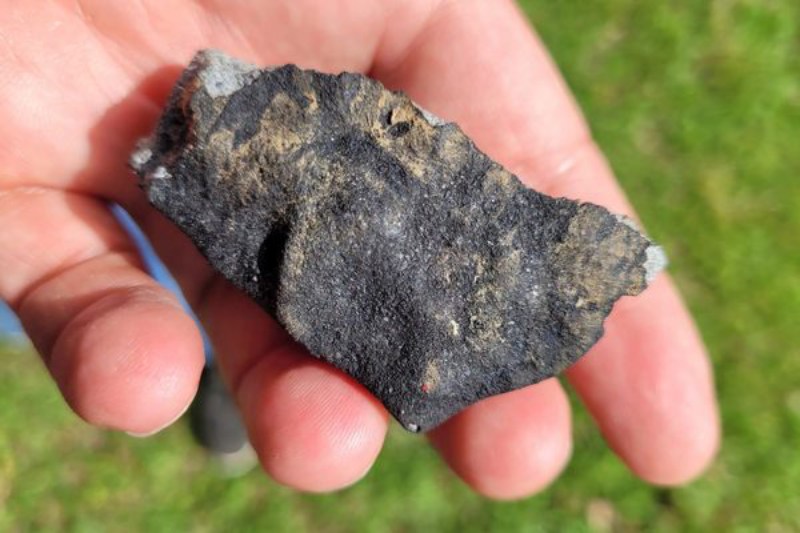Meteorites bombard Earth every day, yet most people don’t even realize it. NASA’s Scout planetary defense system estimates that the Earth is struck by about 50 tons of meteoritic material per day. Occasionally a cosmic fireball breaks through the atmosphere and crashes on Earth, although most little pieces are never detected. That’s exactly what happened on January 21 outside of Berlin, Germany. As a meteorite broke apart into several fragments while traveling through the asteroid belt between Mars and Jupiter, meteor watchers worldwide organized to start looking for it.
The meteorite from asteroid 2024 Bx1 was being tracked by the European Space Agency’s Meerkat asteroid guard system and Scout data, which meteor scientist Peter Jenniskens was monitoring in San Francisco. Professionals and amateurs alike, Jenniskens’s colleagues labored feverishly to forecast the object’s landing spot. At the Museum für Naturkunde, he teamed up with Lutz Hecht and took off on the first of two red eye flights. He claims, “I productively calculated where I expected the meteorites to have fallen during my nine-hour layover in Newark.”
Once in Germany, they partnered with several local organizations and enthusiasts and headed straight to the projected scattered field south of the town of Ribbeck. “We organized the local scientific community very quickly.”
On Thursday, February 1, the team started recovering bits of 2024 Bx1 after a storm-complicated search. The largest piece was discovered by Polish landscape architect Kryspin Kmieciak; it was roughly the size of a baseball. He is referred to be the “main mass holder” in the meteorite world. There is a whole group of other enthusiasts for rocks, and as Kmieciak puts it, “I meet a lot of friends when we go search for meteorites.” In the near future, he intends to operate a meteorite shop in Poznań, Poland.
Teams were able to find the scattered field rapidly because meteorite detection has improved over the past few decades. Astronomers all across the world are continuously observing the skies, according to Robert Lunsford, Fireball Director for the International Meteor Organization and the American Meteor Society. According to him, “this specific meteor was the size of an extremely large beach ball.” “Something this small is very faint when out in space, and the fact that it was discovered before it struck the atmosphere is pure luck.”
Ninety minutes or less before impact, NASA spotted the meteor and sent out a notification. NASA’s Planetary Defense Officer Lindley Johnson said there is no need for fear regarding that brief warning. “If the object were large enough to cause damage at Earth’s surface, it would be detected much sooner than a few hours from now, and the notification procedure is far more formal to guarantee our governments and the public receive the best information available.” The International Asteroid Warning Network receives observations from astronomers all across the world. There have only been eight instances of tiny asteroids being discovered while they are still in space.
Since aubrite is one of the rarest kinds of space rock, it took many days after impact to detect meteorite fragments. According to Melinda Hutson, curator of Portland State University’s Cascadia Meteorite Laboratory, chondrites—which are easier to locate and contain metal—make about 90% of meteorites. However, aubrites resemble pebbles seen on Earth.
To date, there are only fragments of aubrites in 11 collections worldwide. “Some meteorites can give us an idea of how long it took to build the Earth from small pieces. Others give us insights into the formation of the Earth’s core… The types of meteorites give us a picture of what the building blocks of the Earth may have looked like.”
According to Jenniskens, these aubrite shards have a clear crust, similar to a glass coating, that lets the beauty of each rock show through, unlike other meteorites, which have a black or brown fusion crust. Even among the already-rare aubrites, it is exceptional. He hasn’t seen anything like it before and thinks that future research will reveal more information regarding planetary defense and the beginnings of life.


